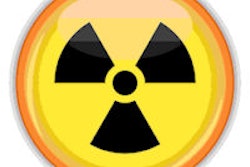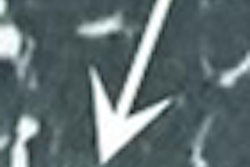Prototype software developed by Fraunhofer MeVis has potential for computer-aided segmentation and measurement of ground-glass lung nodules on chest CT, Dutch researchers have found.
In a phantom test with eight artificial ground-glass nodules and using four models of CT scanners, a research team led by Dr. Ernst Scholten of the University Medical Center Utrecht in the Netherlands found the software yielded volume and mass measurements that didn't significantly differ from the true values.
"Computer-aided segmentation and mass and volume measurements of [ground-glass nodules] with the prototype software had promising results in this study," the authors wrote in the August issue of the American Journal of Roentgenology.
A clinical challenge
Occurring less often than solid lung nodules, ground-glass nodules offer a major clinical challenge. These nodules grow slowly, are often multiple in number, and have a high malignancy rate, according to the researchers (AJR, August 2013, Vol. 201:2, pp. 295-300).
Manual measurements of ground glass nodules take approximately five to 10 minutes of segmentation time. To see if a more automated method for nodule segmentation would be effective, the group evaluated the Fraunhofer MeVis' prototype software, which automatically segments ground-glass nodules and then calculates volume and mass after adjusting for roundness and density.
Eight artificial spherical homogenous lung nodules with a smooth surface were inserted into an anthromorphic thorax phantom. The nodules had four diameters (5, 8, 10, and 12 mm), which corresponded to volumes of 65, 268, 523, and 904 mm3, respectively.
The team then obtained CT images from two 16-multidetector CT (MDCT) scanners (Mx8000 IDT and Brilliance 16P, Philips Healthcare), one 64-MDCT scanner (Brilliance 64, Philips), and one 256-MDCT scanner (Brilliance iCT, Philips).
All CT was performed at a tube voltage of 120 kVp and tube current-time product of 25 mAs; acquisitions used the same slice thickness of 1 mm. The images were reconstructed with soft and sharper filters, thus yielding eight sets of images for evaluation.
Tube voltage, current effect
The researchers also sought to assess the influence of tube voltage and current on the accuracy of mass measurement by varying the tube-current time product at 25 mAs and the voltage at 120 kVp on the Brilliance iCT scanner for a total of seven combinations.
One radiologist with 30 years of experience used a standard PC running the prototype software to measure the lung nodules. After a user clicks a mouse cursor on the nodule of interest, the software automatically delineates the nodule and quantifies its diameter, volume, average density, and mass. Users can adjust density threshold value and roundness of the segmentation.
After the software provided its first measurement using default values, the radiologist subjectively rated measurements on a score of 1 (complete failure, no measurement possible) to 5 (perfect). If the score was less than perfect, the radiologist was allowed to adjust roundness and density thresholds, and a second measurement was made.
Enlarged multiplanar reconstructions in three directions were then presented simultaneously with the axial image in order to judge the quality of segmentation and the effect of the adjustments, according to the researchers.
Improved performance
Without user adjustment, 37 (57.8%) of 64 measurements in the series with 25 mAs and 120 kVp were judged to be perfect (8) or good (29). After adjustment, that number increased to 58 (90.6%) of 64; six (9.4%) were considered to be fair, poor, or a failure.
Expressed as absolute percentage error, the software yielded an error range of 2% to 36% for measuring volume and 5% to 46% for measuring mass. The measurement differences were not statistically significant, however.
In other findings, the researchers did not discover any significant differences in mean absolute percentage error for between filters for nodule density, volume, and mass. The tube-current time setting also did not have a significant influence on nodule density, volume, and mass.
Although differences in volume and mass measurements for the 80 kVp tube voltage setting did not reach statistical significance, the mean absolute percentage error for volume increased to 36% from the 12% absolute percentage error in the 120 kVP setting and from 28% to 46% for mass. The 46% absolute percentage error was the largest error observed in any of the CT series.
"Care must be taken in choosing the technical parameters for CT for [ground-glass nodule] quantification because excessive noise on the image can cause inaccurate results," the authors wrote.
The researchers also noted small but visible imperfections of the segmentation process for excluding vessels in the nodules that had adjacent vessels.
"Inclusion of part of the vessel artificially raises the apparent mass of a nodule," the authors wrote. "In clinical practice, this situation would be even more complex because not only vessels adjacent to but also vessels running through a [ground-glass nodule] have to be dealt with, and [ground-glass nodules] can have solid components. Further research into this problem is warranted."



















